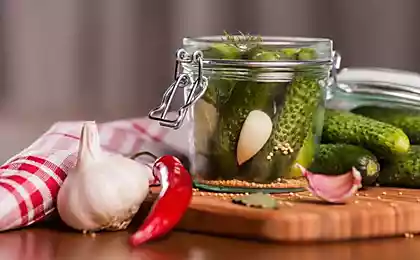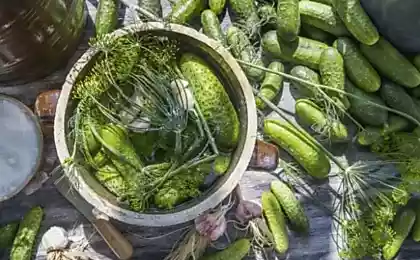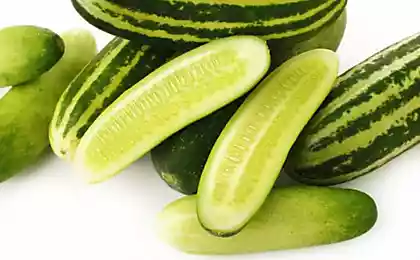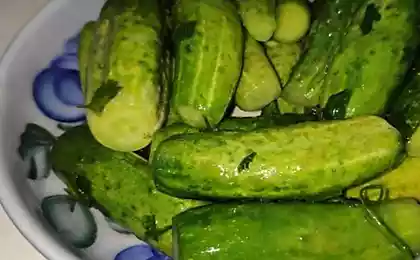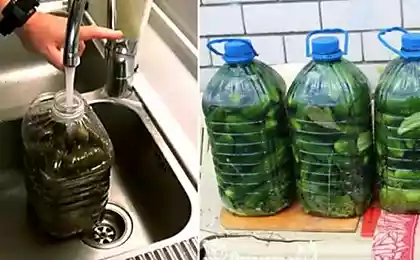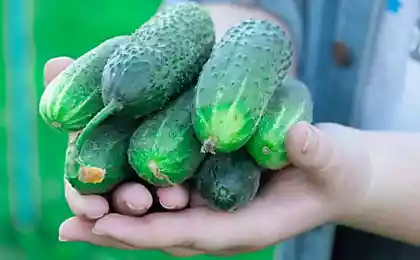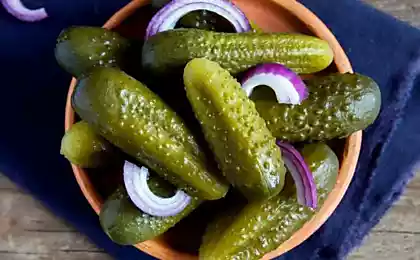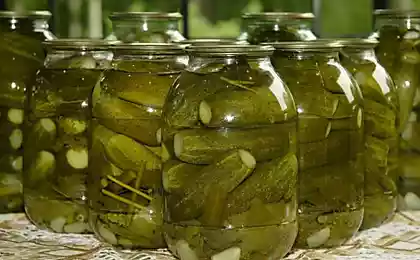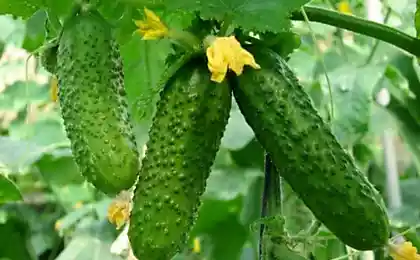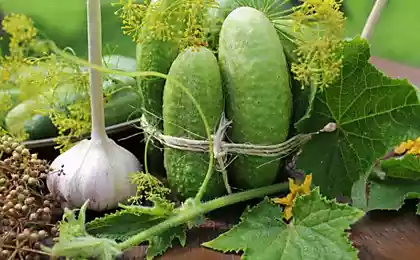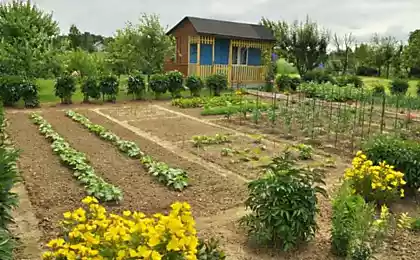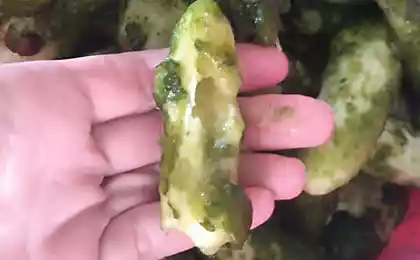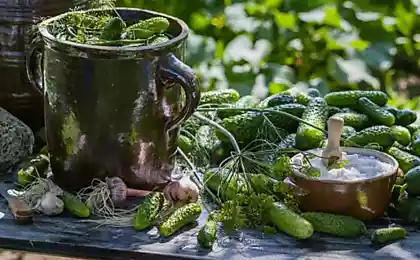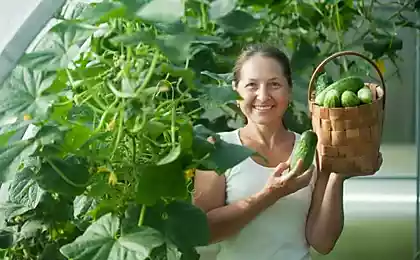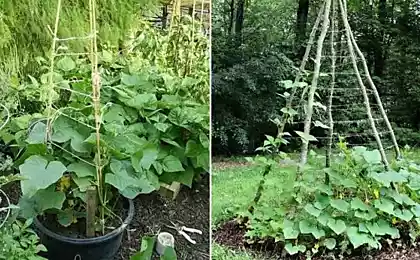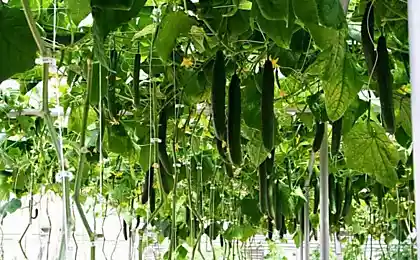221
Cucumber feeding
The cucumber has gained national fame for good reason - it successfully combines green fresh aroma, crunchiness, juiciness and low calorie content. The nutritional value of this vegetable, however, is quite small: consisting of 95-96 % of water, cucumbers include only up to 2.5 % of sugars, 1% of protein substances, 0.1% of fat and vitamins A, B, C and P. But you can eat them as much as you want - and not gain weight!
Perhaps there is not a single gardener who would not grow cucumbers on his plot. Therefore, the topic of their feeding is always important and relevant, because underfed or overfeeded - and you will not see even bubby sweet babes, you will have to be content with ugly "comas"...
For the entire summer season, it is enough for cucumber bushes to spend 3-4 fertilizing. As a rule, we use supplements.
Each summer resident will choose the type and form of feeding or their alternation, but some general approaches should be taken into account by everyone.
Root feeding Suitable for a warm summer. Then the root system of cucumbers is well developed, and fertilizing go “hurrah”. They are advised to carry out after rain or heavy watering. The best time is in the evening, or on an overcast, cool day.
Extra-rooted Feeding will be useful in the case when the summer is cold, and the weather is cloudy. Roots in the cold time with the assimilation of nutrition will not cope. But spraying the leaves will be just what you need. Such feeding is carried out in the evening or on a cloudy day, in small doses. It is very important that the nutrient waste is sprayed with small droplets and evenly. The longer it stays on the leaves, the more necessary substances the plant will have time to absorb.
Feeding regimen Feeding 15 days after landing
fertilization - early in flowering
fertilization During mass fruiting
IV feeding - also during the fruiting period; its purpose is to extend the fruiting period of cucumber lashes and make it more abundant.
In the next video - tips on fertilizing cucumbers in the greenhouse from a specialist Garden World
Attention! There is also an opinion: if cucumbers on your soils grow beautifully and bear fruit, then you should not overdo it with fertilizing - you can limit yourself to only one or two.
Experienced summer residents offer many wonderful food options. Based on the already tried recipe, you can choose the most successful for your soil, weather conditions and wallet.
First feeding Organic:
Third feeding Organic:
Useful “guaranteed” advice
Source: www.7dach.ru
Perhaps there is not a single gardener who would not grow cucumbers on his plot. Therefore, the topic of their feeding is always important and relevant, because underfed or overfeeded - and you will not see even bubby sweet babes, you will have to be content with ugly "comas"...
For the entire summer season, it is enough for cucumber bushes to spend 3-4 fertilizing. As a rule, we use supplements.
- mineralic
- organic
Each summer resident will choose the type and form of feeding or their alternation, but some general approaches should be taken into account by everyone.
Root feeding Suitable for a warm summer. Then the root system of cucumbers is well developed, and fertilizing go “hurrah”. They are advised to carry out after rain or heavy watering. The best time is in the evening, or on an overcast, cool day.
Extra-rooted Feeding will be useful in the case when the summer is cold, and the weather is cloudy. Roots in the cold time with the assimilation of nutrition will not cope. But spraying the leaves will be just what you need. Such feeding is carried out in the evening or on a cloudy day, in small doses. It is very important that the nutrient waste is sprayed with small droplets and evenly. The longer it stays on the leaves, the more necessary substances the plant will have time to absorb.
Feeding regimen Feeding 15 days after landing
fertilization - early in flowering
fertilization During mass fruiting
IV feeding - also during the fruiting period; its purpose is to extend the fruiting period of cucumber lashes and make it more abundant.
In the next video - tips on fertilizing cucumbers in the greenhouse from a specialist Garden World
Attention! There is also an opinion: if cucumbers on your soils grow beautifully and bear fruit, then you should not overdo it with fertilizing - you can limit yourself to only one or two.
Experienced summer residents offer many wonderful food options. Based on the already tried recipe, you can choose the most successful for your soil, weather conditions and wallet.
First feeding Organic:
- Fresh chicken (or quail) litter at a concentration of 1:15. Use freshly prepared
- slurry concentration 1:8
- cow or horse manure in concentration 1:6
- infusion of green grass in concentration 1:5
- 1 tablespoon of urea + 60 g of superphosphate per 10 liters of water
- 10 g of ammonium nitrate + 10 g of superphosphate + 10 g of potassium salt per 10 liters of water
- 5 g of ammophos to put in the ground (sprinkle and seal with loosening)
- 1 cup of ash per 10 liters of water
- Superphosphate + ash in dry form - put in the ground (sprinkle and seal with loosening)
- 20 g of potassium nitrate + 30 g of ammonium nitrate + 40 g of superphosphate
- 35g superphosphate per 10l of water
- 1 hour spoon of boric acid + 10-12 crystals of potassium manganese acid per 1 liter of water
- 2 g of boric acid + 100 g of sugar per 1 liter of hot water (spray to attract pollinators)
Third feeding Organic:
- Green fertilizer in concentration 1:5
- 1 cup of ash per 10 liters of water
- 25-30 g of potassium nitrate per 10 liters of water
- 50g urea per 10l water
- 10-12 g of urea per 10 liters of water
- 1 cup of ash per 10 liters of water
- 2-day infusion of hay
- 28-30 g baking soda per 10 liters of water
- 15g urea per 10l water
Useful “guaranteed” advice
- If cucumbers begin to bitteren, it means that they lack moisture, or they were affected by sharp changes in night and day temperatures. It is necessary to provide abundant watering with warm settled water not only under the root, but also throughout the area of the bed.
- If the shape of cucumbers resembles a light bulb (narrowing in the peduncle area) or a hook, then there is not enough potassium. It is necessary to add ash spraying and watering to the diet - 1 liter under the root. You can spray and a solution of potassium phosphate by prescription: 1 hour spoon per 1 liter of water.
- If the cucumbers are narrowed at the tip but thickened at the peduncle, this indicates a lack of nitrogen. About nitrogen starvation also say thin cucumber lashes; leaves that have become smaller than usual; light, even whitish (not bright green) cucumbers. Here organics will come to the rescue: watering with a solution of mullet 1:10, 1 liter under the root is recommended.
- If you find it difficult to determine what element your cucumbers lack, it is best to feed them with complex fertilizers with trace elements. And the complex - it is the complex - the necessary element will find its client:
Source: www.7dach.ru
The horseshoe crabs from North Carolina aquarium
Raspberry is a treat and medicine. 10 reasons to eat raspberries
